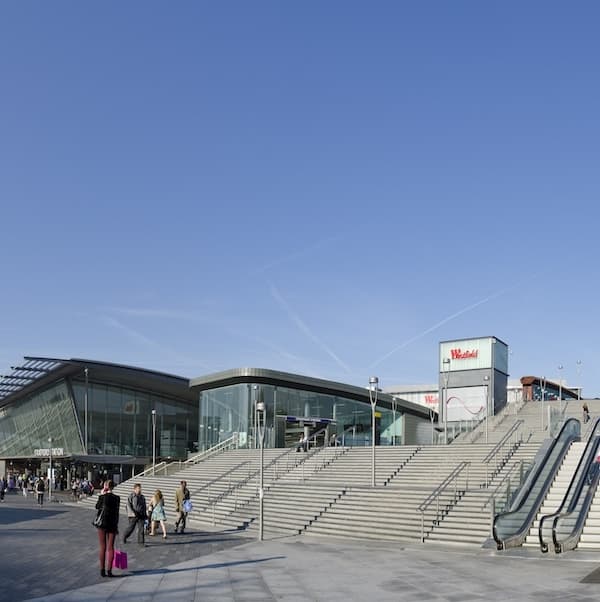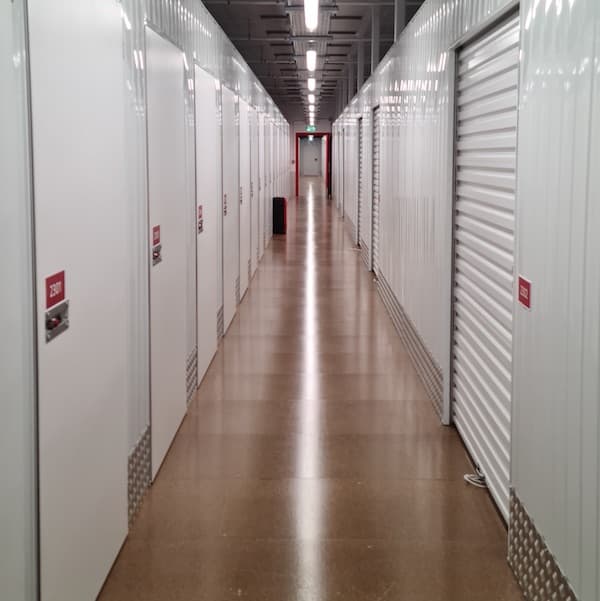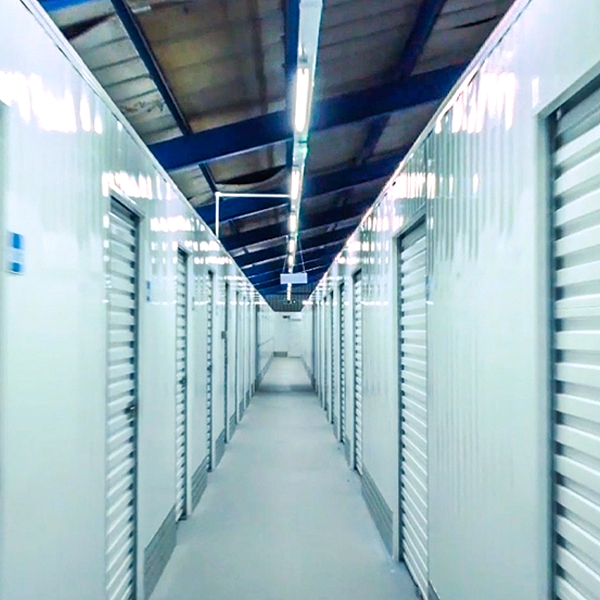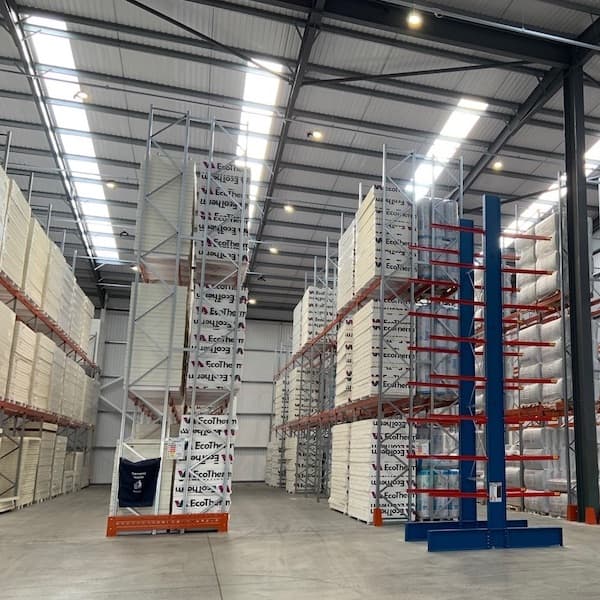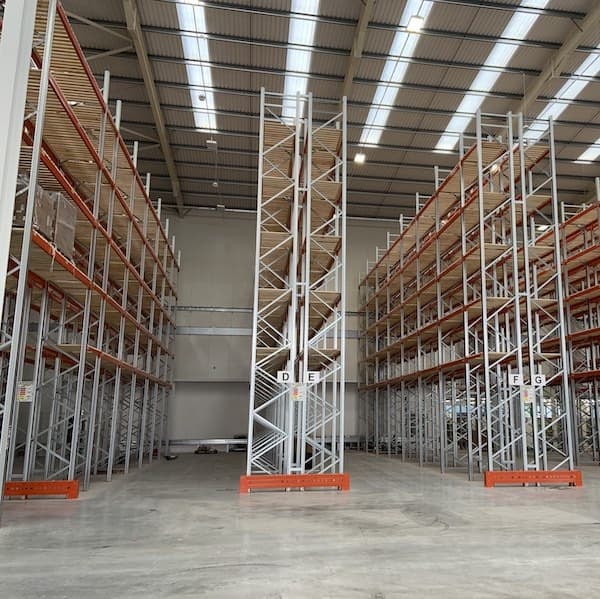- Mezzanine Floors
- Solutions
- Multi-Tier Mezzanines
- Mezzanine Pallet Safety Gates
- Mezzanine Staircases
- Mezzanine Handrails and Balustrades
- Mezzanine Decking
- Fire Protection for Mezzanine Floors
- Mezzanine Lift Shaft Design and Installation
- Resources
- Mezzanine Floor Calculator
- Mezzanine Floor Regulations and Building Control
- Self-Storage Mezzanine Floors
- Self-Storage Units
- Resources
- Self-Storage Site Selection Information
- Calculating The ROI of Self-Storage Conversions
- Planning for Automation in Self Storage
- Racking & Shelving
- Solutions
- Cantilever Racking
- Pallet Racking
- Coil Racking
- Longspan Shelving
- Tyre Racking
- Kimer Racking
- Live Storage Racking
- Drive In & Drive Through Racking
- Clip Shelving
- Mobile Shelving
- Custom Fabrications
- About Us
- USS Case Studies
- Self-Storage Fit-out For Raked Ceiling Building
- Mezzanine And Staircases For Entertainment Venue
- New Mezzanine And Staircases For Major Retailer
- Mezzanine Pallet Safety Gate
- Self-Storage Fit-Out Project For Brand New Facility
- Warehouse Racking, Wire Mesh & Shelving for New Warehouse
- Self-Storage Partition System & Components Installation
- Self-Storage Store Mezzanine And Staircases
- Multi-Tier Mezzanine For Logistics & Distribution Facility
- Warehouse Plant Platform
- Self-Storage Facility Space Expansion
- Mezzanine Floor For Distribution Warehouse
- Bespoke Feature Staircase & Mezzanine
- Single Level, Multi-Use Mezzanine
- Mezzanine For A New Building
- Mezzanine Floor For Plumbing Supplies Warehouse
- New Racking System and Mezzanine Floor
- Car Park Conversion To Self Storage Facility
- Pallet Racking and Cantilever Racking For Warehouse
- Two Mezzanine Floors For Self-Storage Facility In Birmingham
- Our Accreditations
- Contact Us
- USS Case Studies
- Speed - If a picker is asked to pick up a teapot that has been ordered, and all of the teapots are stored in a single designated spot, then the picker would have to travel there, whether it is twenty feet away or several hundred yards. With twenty-five different locations to choose from, however, there’s a much greater chance that one of the pickers will be close to a teapot and an increased chance that any other items on a customer’s order won’t be too far away.
- Space—Not having designated spaces for individual items or item types removes the risk of empty shelves while the next batch of items is on order. The largest Amazon warehouse is already 1 million square feet, but if empty space needed to be reserved for specific items, even this wouldn’t be enough room to store the range of items Amazon wants to offer for next—or same-day delivery.
- Customer Base—Amazon sells directly to customers rather than retailers, so most orders will only be for a single teapot. For this reason, it makes no sense to take up the extra room it would require to store all of the teapots in stock in the same place.
The Latest Blogs From USS
Under The Microscope - The Amazon Warehouse
read
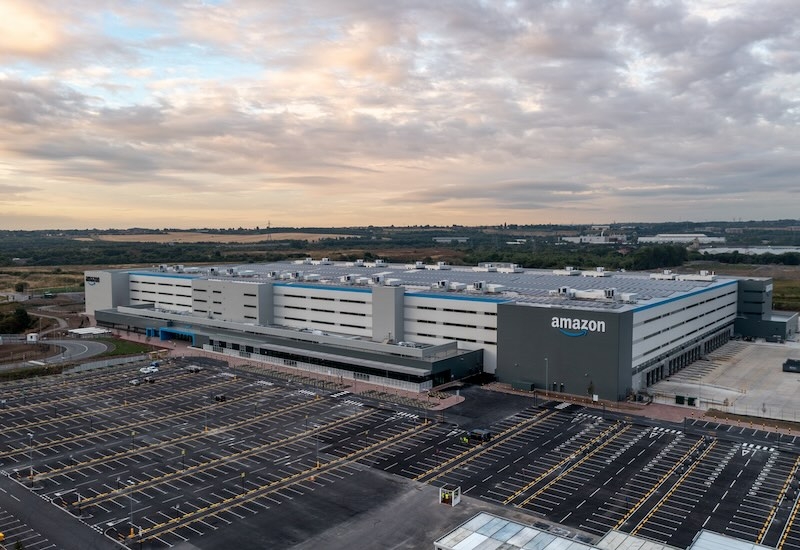
It may be difficult to imagine now, but when Amazon launched in July 1995, it was an online bookstore, nothing more or less. It was also based in the garage of founder Jeff Bezos’ home (quite a big garage, admittedly, but still a garage) and got off the ground thanks to a $250,000 investment from Bezos’ parents.
All of this is interesting, but it becomes even more fascinating when these relatively humble beginnings are contrasted to the retail and online giant that is Amazon in 2024. Using market capitalisation, for example, a measure that calculates the total worth of a publicly traded company's outstanding shares, Amazon is worth $1.814 trillion as of February 2024, which makes it the fifth most valuable company in the world.

In 2023, the company made profits of $30.42 billion, and Amazon Web Services (AWS) alone – the cloud computing service which began in 2014 as a small offshoot of the main company – brought in $24.2 billion in revenue, making it the largest cloud computing service in the world. It’s easy to get swept away in a blizzard of statistics when considering the sheer size of Amazon – control of 67-85% of the e-book market, 350 million products available on the website, 90% of shoppers in the UK and US using the app – but if one single thing can be said to underpin all of this success, then it is still e-commerce.
Efficiency Underpins Everything Amazon
Despite the diversification of the Amazon brand into multiple sectors, online stores still bring in the most revenue. 2023, for example, online shopping generated $231.8 billion in revenue, compared to $40.2 billion for subscription services and $90.7 billion for AWS. There are many reasons for this, ranging from the fact that e-commerce, in general, has grown almost exponentially in the wake of the Covid-19 pandemic – from global sales figures of $5,311 billion in 2022 to a projection of $8,034 billion in 2027 – to the user experience of the Amazon app itself.
However, all of this is underpinned by the highly efficient way in which the Amazon warehouses operate. Massive revenue drivers such as guaranteed next-day delivery, in two days (in the US) or even on the same day the order is made, are only possible thanks to the hugely effective way in which the vast Amazon fulfilment centres process orders and get items - from a selection of literally hundreds of thousands - packed and delivered at the fastest possible pace. Much of the coverage of these hyper-efficient warehouses has centred on high-tech automation, and the use of robotic technology (and we’ll be looking at these in more depth), but what most people might not realise is that the foundation underpinning the operation of Amazon warehouses involves a healthy dose of randomness and chaos. And also, that the introduction of a random method of storing items in the warehouses was initially inspired by none other than Harry Potter.
Randomness And Chaos To Create Order
When Harry Potter and the Philosopher’s Stone, the first book in the series, was published in 1997, the books in Amazon warehouses were organised by title (incidentally, they were also picked for packing and posting by individuals carrying the printed order on a piece of paper). However, the popularity of the first Harry Potter book was such that bottlenecks began to form in the fulfilment process, as pickers stood in line to take copies of the same popular book from the same place on the shelves.

A Time-Honoured Approach Still Drives Modern Efficiency
This led the company to introduce ‘random stow’, which means items are stored in any available space in the warehouse. This system still operates today.
However, one thing that hasn’t endured from 1997 to the present day is the method of picking. Back then, picking involved batches of items printed on orders and assigned to employees working along particular pick paths. These employees would then walk along the rows of shelves wheeling flatbed carts, selecting the items on their list. This is repetitive, physically arduous, and time-consuming manual work that has gradually been replaced by automated solutions. Believe it or not, however, the automation only works as efficiently as it does, thanks to the seemingly chaotic application of random stow.
In a warehouse organised along traditional lines – and many warehouses still are – a batch of twenty-five teapots, for example, would be stored on a designated ‘teapot’ shelf, perhaps in a ‘crockery’ area of the warehouse. In an Amazon warehouse, however, the teapots would not align with metrics such as their demand, the type of customer likely to order them, or where they will be shipped. Instead, each is placed wherever an employee can find an open space, meaning that our twenty-five teapots might end up in twenty-five different areas of the warehouse.

Speed, Space And Customer Base
The reasoning behind the random stow method is based on a few practical benefits allied to the use of technology developed by Amazon itself. The practical benefits are as follows:
Random stow as a philosophy wasn’t invented by Amazon; it has just been refined and scaled up like never before, but it only works as it does because of the inventory management system in use. Like much of the technology utilised by Amazon, the inventory management system was built in-house and involves each item being scanned with a handheld scanner before it is placed on a random spot on a shelf. This allows the warehouse management system operating in each warehouse to keep track of where each of a vast number of items is stored.
Welcome The Robots
The other major leap forward in the development of the modern Amazon warehouse was the introduction of robotics. As with the inventory management system mentioned above, the robots used in Amazon warehouses were all developed in-house following the company’s purchase of Kiva Systems – the company making Amazon's robots – for $775 million in 2014. Since then, the company has deployed over 750,000 mobile robots at more than 300 Amazon warehouses worldwide. The fact that there are currently as many as 12 different types of robots operating in Amazon warehouses underlines the drive with which it constantly pushes for the next innovation needed to enhance the efficiency of its warehouse operations. This has meant shifting from the earliest robots able to run only along pre-programmed routes in caged-off areas of a warehouse to contemporary versions which are increasingly autonomous.
The original Amazon robot, the Kiva, had a base that measured 2.5ft by 2ft and could carry 1000 lbs. In 2007, the company introduced the Hercules, similar to the Kiva but capable of lifting and carrying 3000 lbs, meaning that much heavier pallets could now be shifted through automation. The Pegasus came along as a replacement for the original Kiva, being able to carry 1200 lbs but having a bed located much closer to the ground.

This is significant since it meant pallets could be stored on shelves and stacked much lower to the ground than previously, thus increasing storage space. The Pegasus robots were initially rolled out in warehouses closer to cities, where the ability to store more products means meeting orders faster. The decision to develop and build a robot with a lower bed highlights how Amazon utilises relatively simple changes in the technology being used – a small engineering and design adjustment in this case, rather than some revolutionary computing breakthrough – to maximise efficiency.
Sophistication From A Hybrid Approach
More recently (2019), the Xanthus robot has been added, and its hybrid nature makes it more sophisticated than the robots already mentioned. The Xanthus combines a carrying goods to person (G2P) feature with the ability to sort packages, and this versatility represents the future of Amazon robotics – fewer individual robots capable of fulfilling a greater number of tasks in increasingly autonomous ways.
For example, we can look at the Sparrow picking arm. This moves on from the earliest iterations of robot-picking arms, which were generally only able to pick items of a fairly regular shape. In contrast, Sparrow uses a combination of computer vision, suction cups, and AI to pick and handle a wide variety of shapes, including curved items, irregular shapes and fragile items that need very careful handling. The Sparrow can safely grip 65% of the more than 100 million items stocked by Amazon, so much so that in some warehouses, operations are now being reconfigured with the picking arm in mind. Machine learning enables robots like Sparrow to ‘teach’ themselves when and how to pick items, and cloud computing means that this learning can then be shared instantly with every other Sparrow operating in Amazon warehouses.
And So On .... And So On. What Next?
The latest iteration of robotics and automation in Amazon warehouses is Sequoia, a system that features autonomous vehicles transporting totes carrying products to a sorting machine. The system involves Sequoia identifying and cataloguing the items in each tote and then directing them to the employees responsible for order fulfilment. Sparrow and Sequoia, when combined, work to eliminate a huge percentage of the physically difficult and time-consuming tasks originally carried out by employees, something which will not only increase efficiency further but will also help to alleviate the recruitment and retention crisis which is gripping the logistics sector as a whole.
This blog is for information purposes only and should not be construed as legal or financial advice and not intended to be substituted as legal or financial advice.
Find Us
S & L United Storage Systems Ltd
United House, The Street
Takeley, Bishop's Stortford
Hertfordshire, CM22 6QR
Company No. 1313816
VAT No. 291616253Say Hello
01279 871 787Copyright © 2025 S & L United Storage Systems Ltd. All rights reserved.
- About Us

